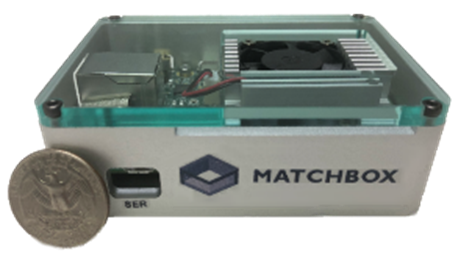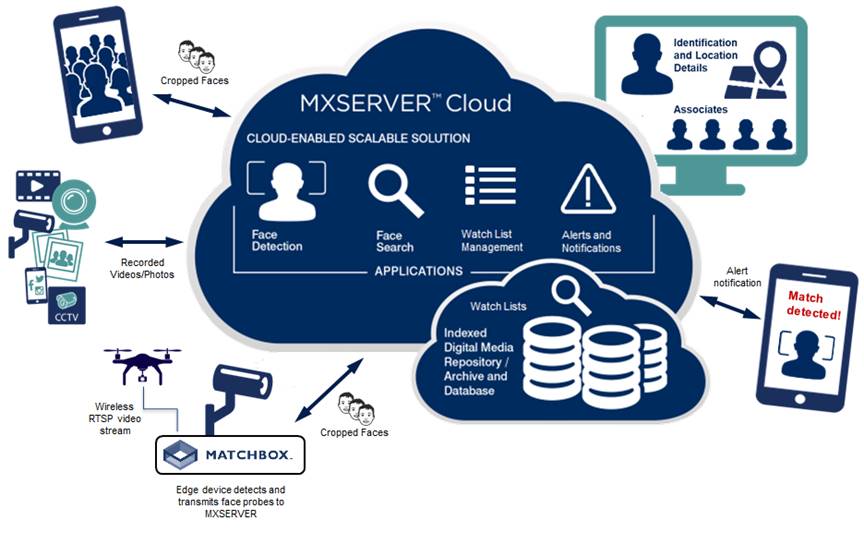- Rapidly analyze and search massive collections (hundreds of millions) of videos/photos, and
- Monitor large arrays of video surveillance cameras in real time

MatchBox – AI-Enable any Video Camera
MatchBox is a small IoT network appliance that connects to a surveillance camera and automatically detects, tracks, extracts and submits objects of interest including faces, people, and vehicles. Face images can be forwarded to Tygart’s cloud-based Face Recognition engine, MXSERVER. MatchBox’s pluggable ML algorithm capability means virtually any ML object detection algorithm can be integrated for custom video analytic tasks.
Tygart’s MatchBox analyzes video streams from IP surveillance cameras in real-time and uploads cropped images of detected objects to a central cloud service. Processing at the edge with MatchBox eliminates the need to transmit full motion video to a server in the cloud, enabling operation in bandwidth-constrained communication environments. With MatchBox, organizations are capable of deploying very large arrays of cameras – on the order of tens of thousands of simultaneous video streams.
MXSERVER and Matchbox – Combined, deliver “ubiquitous identification”
Combined, MXSERVER and Matchbox provide the ability to rapidly identify an unknown person anywhere, anytime and using any face capture device and/or video/digital camera which has Internet or LAN connectivity. MXSERVER and Matchbox are enabling soldiers, security personnel, forensic examiners, intelligence analysts, and law enforcement investigators to:
- Identify persons-of-interest using face recognition
- Continuously monitor large arrays of video surveillance devices to detect and identify persons of interest
- Identify, locate, and track persons of interest, their associates and their activities across time and locations
- Identify individuals in field environments using smart phones – including the ability to quickly scan crowds for threats using a mobile device’s embedded video camera
- Manage cameras and other sensors, watchlists, and face indexed video/photo repositories in the cloud
- Generate, manage and transmit match notifications and alerts in the cloud
- Collect and search Social Media content using face detection and face recognition
- Rapidly add new video analytic algorithms into MXSERVER’s highly flexible and scalable video processing workflow framework
MXSERVER’s flexible architecture supports multiple end-use applications which leverage a common core of cloud-based technology components. The platform has been proved to scale to unprecedented levels in the industry – indexing and searching hundreds-of-millions of videos/photos containing billions of face images.

Tygart’s MXSERVER platform delivers a highly flexible and scalable microservice oriented high-performance computing platform into which a broad spectrum of machine learning algorithms (biometric detection and matching, object detection and classification, image enhancement and manipulation, etc.) can be rapidly integrated.
Get More Information
"*" indicates required fields
